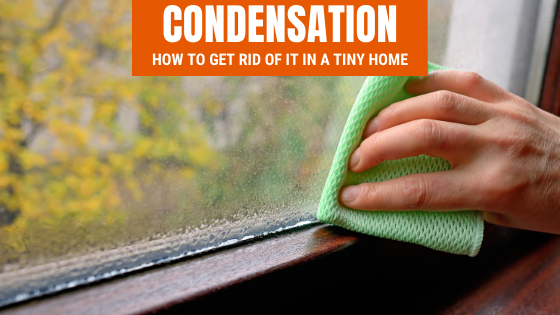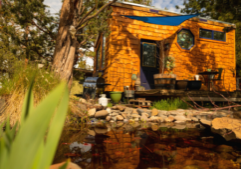
What Causes Window Condensation and How to Get Rid of It
Do your windows always covered in moisture after a cold night? Learn what causes window condensation below and how to get rid of it.
Do you often see moisture on your windows especially after a cold evening? Even if your tiny home has the best views in town, window condensation can ruin the entire viewing experience.
Windows are integral parts of the house, which homeowners do not regret spending thousands of dollars on.
But even if you install the most expensive set of windows, moisture can still find its way to them, which can lead to mold problems.
So how do you address condensation on windows? How do you keep moisture on the side of windows at bay?
Continue reading below to find out the answers.
Window Condensation: What Causes It?
To address window moisture, you must first identify what causes it. Sometimes, the moisture can make your windows too foggy. In some cases, it can generate an icy look.
These examples all stem from window condensation. But you may ask, is it your windows that are causing the condensation? The answer is no; they are not the source.
They are only one of the first spots in your house where condensation manifests. Condensation happens when warm and humid air comes in contact with a cold surface. When warm air cools, it contracts, prompting its moisture to condense.
In this case, it is your window that is the cold surface. Condensation becomes visible on the glass. This is more evident, especially during the colder months through winter.
However, there are different parts of the windows where condensation may occur.
Inside of the Windows
Condensation inside your windows may be a result of heat coming from stove pots or shower steam. However, it may also be a sign of something more severe, like a ventilation issue. Poor tiny home ventilation can result in serious problems for your home and your family.
The key is finding the sources of indoor moisture. Some of the other culprits are fire logs. If you have a wood stove, check your fire logs and store them outside. Though ironically, a fireplace or stove helps reduce excess moisture in your tiny home during the cold months.
You can keep them inside your storage compartment on the exterior of your tiny house or shed for safety.
Too much moisture can cause the formation of molds and mildew. These two can cause allergies, asthma, and hay fever, among others.
There are many ways to address this type of condensation. If you have a humidifier at home, turn it down.
Another option is to invest in a moisture eliminator. This product comes in different forms. There are those that you can hang in your closet.
There are others that you can set on your floor.
You may also consider adding weather-stripping; this will keep your indoor temperature warm. It can also make your home more energy-efficient.
Also, if you have plants at home that are near your windows, transfer them to a different spot. Plants create moisture and release them in the air.
Last but not least, consider replacing your old windows with storm windows. Storm windows help control condensation, especially during winter. They also help reduce frost buildup.
Outside of the Windows
Another type of window condensation happens outdoors. This occurs when outdoor air is slightly warmer or humid compared to your window glass’ temperature. Moreover, outdoor condensation may happen regardless if the weather is warm or cold.
But outdoor condensation is also telling you something important. It means that your window is not letting heat transfer. This is a good thing.
When you see your windows fogging from the outside, it means that your home’s insulation is doing its job. But the fog will affect your view. Hence, you still need to get rid of the condensation.
Unlike interior condensation, this is much easier to address. You can go out of the house and wipe the glass dry with a clean and soft cloth. In case you don’t want to go outside, simply play the waiting game.
Wait for the sun to warm up your house and let the condensation evaporate naturally.
Or, you can use a glass water repellent cleaner. Not only will it clean your glass window, but it will also help reduce condensation and moisture. It works by prompting water to gather together and naturally run off the glass.
But never let your guard down. Inspect the frames and sills of your windows. You want to ensure that there are no gaps between the window and the frame.
In-between the Window Panes
Condensation between window panes is arguably the most annoying. It is also a sign of a more serious underlying problem with your home. Though condensation inside the windows usually happens on older windows, it also means that humidity is quite high inside your house.
As for the type of systems that often experience moisture on the inside of windows, it is the double-glazed kind that is the most susceptible.
Double-glazed panes feature two pieces of glass. The manufacturers layer these glasses and hold them together using a single frame.
Furthermore, they fill up the space between the glasses with insulating gas such as argon. After that, they seal up space in an air-tight fashion.
But as the years go by, the condition of the panes deteriorates. When this happens, moisture can slowly creep in between the double-pane glass.
There are only a few ways to address the situation. First, you can try to clean the windows manually. Try rubbing it off and see what happens.
Another option is to hire a professional window defogger.
If the problem persists, then it’s time to consider replacing your old window altogether.
A suitable replacement is an insulated glass unit. Replacing your windows will not only keep condensation away, but it will also improve your home’s overall energy efficiency.
Go Beyond Your Windows
Addressing window condensation promptly will do wonders for your home. Not only are you protecting the integrity of your windows, but you are also reducing your energy consumption and keeping your family healthy.
But there are many other ways to make your tiny home more energy-efficient.
Check out our other tiny home improvement articles on our blog. We provide tips and solutions for all aspects of tiny living.
Digital Magazine Dedicated to Micro, Tiny & Small Home Living
Do you have more time at home? Enjoy some inspirational reading from Tiny House Magazine!
- Discover different types of tiny houses from liveaboard boats to Alaskan yurts, converted school buses to high wall tents.
- Try recipes from a tiny house kitchen. Each month we feature a recipe from the Tiny House Foodie. Learn to make it work and still cook like a pro.
- Hear from those living with kids in a tiny house. What happens when you build for two but end up with four? Can it really be done?
- Read excerpts from books on tiny houses, downsizing, and a host of other related topics.
- Each month brings new topics and new, exciting articles!












